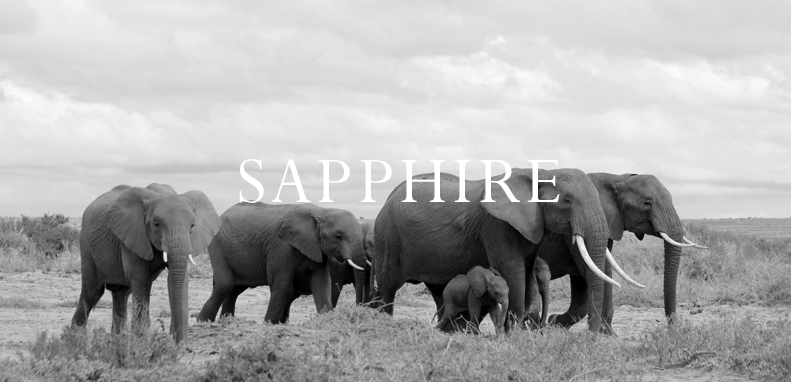- Wenn du dich für eine Auswahl entscheidest, wird die Seite komplett aktualisiert.
- Wird in einem neuen Fenster geöffnet.
Sapphire

Born in March 2001 to Sally, Sapphire is a member of the so-called SA family. The family was first sighted and photographed in 1973 by Cynthia Moss, a pioneering elephant researcher working along Amboseli Trust For Elephants. Sapphire’s mother Sally hadn’t had much luck with children before, as she lost 3 of her first calves. From 1997 her luck changed – with a strong survivor Susannah, and then Sapphire.
Over the nine-year period from 2001 through 2009, 18 more calves were born to the family. This should have been a period of growth and recovery for the SAs, but in 2009 Amboseli, Kenya, was struck by the worst drought in living memory. By the end of that year 83% of the wildebeests, 71% of the zebras, and 61% of the buffaloes had died. More than 400 elephants perished from both the drought and an upsurge in poaching. The problem was that there was almost no vegetation left to eat. Amboseli always has fresh water because of the underground rivers coming from Kilimanjaro. These rivers create permanent swamps in the Park. So the animals did not die of thirst but rather from hunger. In addition, in the case of the elephants, as they weakened they appear to have succumbed to disease as well. To add to the troubles, the researchers witnessed an upsurge of poaching for ivory at the same time, possibly catalysed by the number of carcasses, and the desperate economic losses people in the ecosystem were suffering.
The calves and elderly were the first to go. Of the adult females over 50 years old only two survived in Amboseli. Over half of the matriarchs died, including Shirley, SA family leader. Due to the resurgence of poaching, and the fact that both SA families used areas that had become dangerous, researchers were never sure whether Shirley died as a result of the drought or at the hands of poachers. Sally, Sapphire’s mother shared a similar fate. Sapphire was just old enough to survive this devastating loss and recover fully from the loss and tragedies. She is currently striving as a mother herself.
Photo credit and text: Cynthia Moss, Amboseli Trust For Elephants, Kenya Wildlife Service


